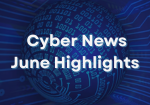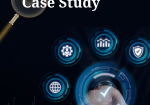
Understanding the Role of Encryption in SIEM
Security Information and Event Management (SIEM) tools are critical for detecting and responding to cyber threats. By centralising security data from various sources, SIEMs provide a comprehensive view of network activity. Encryption plays a crucial role in safeguarding this sensitive data.
Encryption Points in SIEM
Data Ingestion:
- Log Encryption: SIEMs can ingest encrypted logs from various sources, including firewalls, servers, and network devices. This prevents unauthorized access to sensitive data during transmission.
- Tokenisation: For highly sensitive data like credit card numbers or Personally Identifiable Information (PII), SIEMs can tokenise the data, replacing it with a unique identifier. This protects the original data while still allowing for analysis.
Data Storage:
- Encrypted Databases: SIEMs often store data in encrypted databases, ensuring that even if the database is compromised, the data remains inaccessible
- Data at Rest Encryption: This protects data stored on disk or other storage media.
Data Processing:
- Encrypted Search: Some SIEMs offer encrypted search capabilities, allowing for analysis of encrypted data without decrypting it. This helps to protect sensitive information during investigations.
Data Sharing:
- Encrypted Data Sharing: If SIEMs need to share data with other systems or teams, they can do so using encryption to protect the data during transmission.
Challenges and Considerations
- Performance Overhead: Encryption can introduce performance overhead, especially for high-volume data ingestion and processing. SIEM vendors often employ optimization techniques to mitigate this impact.
- Key Management: Proper management of encryption keys is essential to prevent unauthorized access. Key rotation and storage are critical considerations.
- Compliance Requirements: Some industries have specific regulations regarding data encryption. SIEMs must comply with these requirements to avoid penalties.
Best Practices for Encryption in SIEM
- Evaluate SIEM Capabilities: Choose a SIEM that offers robust encryption features and complies with relevant regulations.
- Implement Strong Encryption Algorithms: Use industry-standard encryption algorithms like AES or RSA.
- Secure Key Management: Employ secure methods for storing and managing encryption keys.
- Regularly Update and Patch: Keep your SIEM and encryption software up-to-date with the latest security patches.
- Conduct Regular Audits: Perform periodic audits to ensure that encryption is implemented and maintained correctly.
Encryption is a critical component of SIEM systems for protecting sensitive data and implementing encryption in SIEM can significantly reduce the risk of data breaches and unauthorised access.
June Cyber News Monthly Wrap-up
June Cyber News Monthly Wrap-up As FY25 kicks off, Australian cybersecurity leaders are facing a rapidly evolving threat landscape. From regulatory enforcement to critical infrastructure vulnerabilities, June’s cyber headlines underscore […]
Read MoreWhat CIOs Should Ask Their MSSP in FY25 Planning
WHAT CIOS SHOULD ASK THEIR MSSP IN FY25 PLANNING As Australian enterprises enter FY25, cyber security is no longer just a technical function it’s a board-level priority. With threat actors […]
Read MoreAustralian SME Achieves ISO 27001 Certification with MSSP Support
CASE STUDY SPOTLIGHT: FROM COMPLIANCE GAPS TO ISO CERTIFICATION The Challenge: Compliance Gaps Threaten Business Continuity When a Sydney based financial and legal consulting firm approached their annual cyber insurance […]
Read MoreHow Shadow IT and SaaS Sprawl Expose Your Business to Cyber Risk
SHADOW IT & SAAS SPRAWL: HIDDEN RISKS IN YOUR CLOUD ENVIRONMENT You can’t protect what you can’t see. In today’s fast-moving digital workplace, employees regularly adopt tools like file-sharing platforms, […]
Read More



